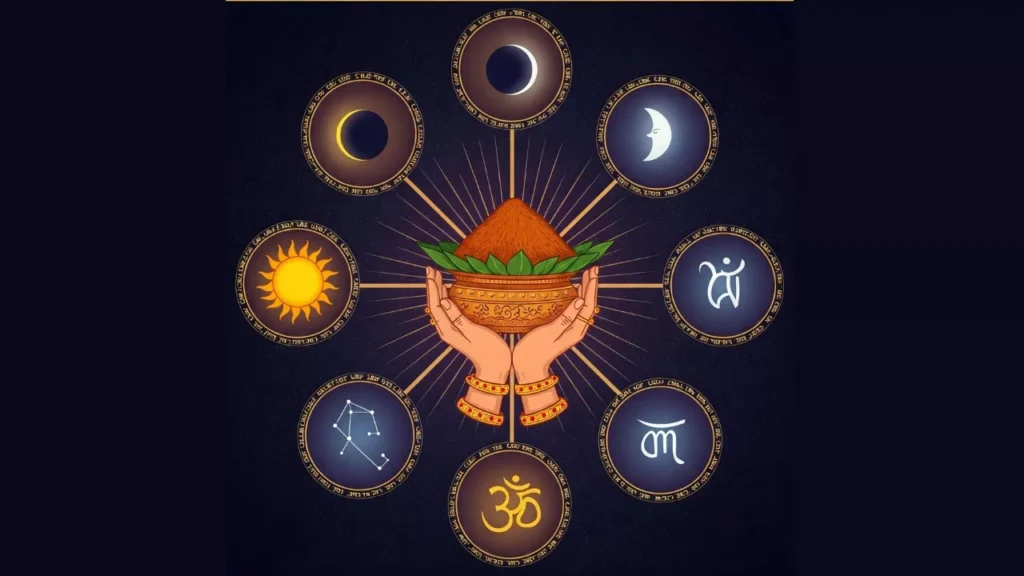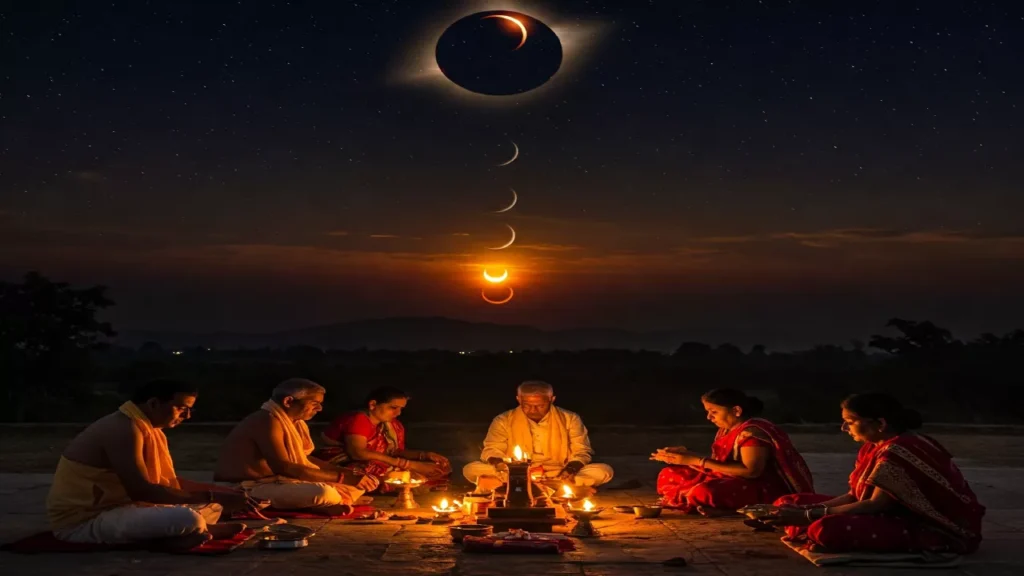Not Just Pitrupaksha: Other Important Times to Perform Shradh for Ancestors

The Personal Connection: Annual Death Anniversary Shradh (Samvatsarik / Kshaya Tithi)
This is perhaps the most personal and important Shradh for an individual ancestor after the initial post-death rites are completed.
Marking the Departure: This Shradh is performed annually on the tithi (lunar day, according to the Panchangam) on which the individual passed away. The Markandeya Purana confirms that the Shradh for a single deceased person (Ekoddista) should be performed on this specific day of death. The Garuda Purana also mentions performing Shradh on this anniversary date.
Significance: This rite specifically honours the journey of that particular soul. It is a focused act of remembrance and offering directed towards the individual parent, grandparent, or other close relative on the anniversary of their departure from the physical world.
Timing Considerations: The Skanda Purana provides nuances, advising against performing the annual Shradh in an intercalary month (Malamasa) and suggesting that for a Brahmin, it should ideally be performed when the Sun is in the same zodiac sign (Rashi) as it was at the time of death.
Harnessing Cosmic Energies: Shradh During Eclipses and Celestial Alignments
Certain astronomical events are considered exceptionally potent times for spiritual practices, including Shradh. The heightened cosmic energies are believed to amplify the effects of the rituals.
Solar and Lunar Eclipses (Grahana): Performing Shradh during a solar (Surya Grahana) or lunar (Chandra Grahana) eclipse is highly praised in the Puranas. The Brahma Purana mentions performing Parvana Shradh (for multiple ancestors) during eclipses. The Varaha Purana lists eclipses alongside solstices and equinoxes as potent times. The Padma Purana also includes eclipses. The period of the eclipse is seen as a powerful window for spiritual activities, making offerings exceptionally effective.
Solstices and Equinoxes (Ayana & Vishuva): The Varaha Purana mentions the solstices (when the Sun reaches its northernmost or southernmost point – Uttarayana and Dakshinayana) and the equinoxes (when day and night are equal – Vishuva) as auspicious times for Shradh. These mark significant transitions in the Sun’s apparent journey and are considered energetically charged.
Samkranti: This marks the Sun’s transit from one zodiac sign (Rashi) to the next, occurring monthly. Certain Samkrantis, especially Makara Samkranti (mid-January), are considered very auspicious for Tarpana and Shradh. The Padma Purana mentions Samkranti as a suitable time.
Vyatipata Yoga: This is a specific astrological combination considered highly suitable for Shradh, mentioned in the Brahma Purana and Varaha Purana. Performing Shradh during Vyatipata Yoga is believed to yield immense and lasting merit.
Beyond Pitrupaksha: When Else Can You Perform Shradh Rituals?

Pitrupaksha Shradh is essential. But what about ‘Darsha Shradh’ every Amavasya? Or ‘Pratyabdika Shradh’ on the actual death anniversary? Are these terms familiar? Do you know why Puranas emphasize performing Shradh during eclipses, Sankrantis, or even before auspicious events like weddings (Vriddhi Shradh)? If your knowledge focuses solely on the annual fortnight, how much of the Puranic guidance on year-round ancestral connection are you missing?
